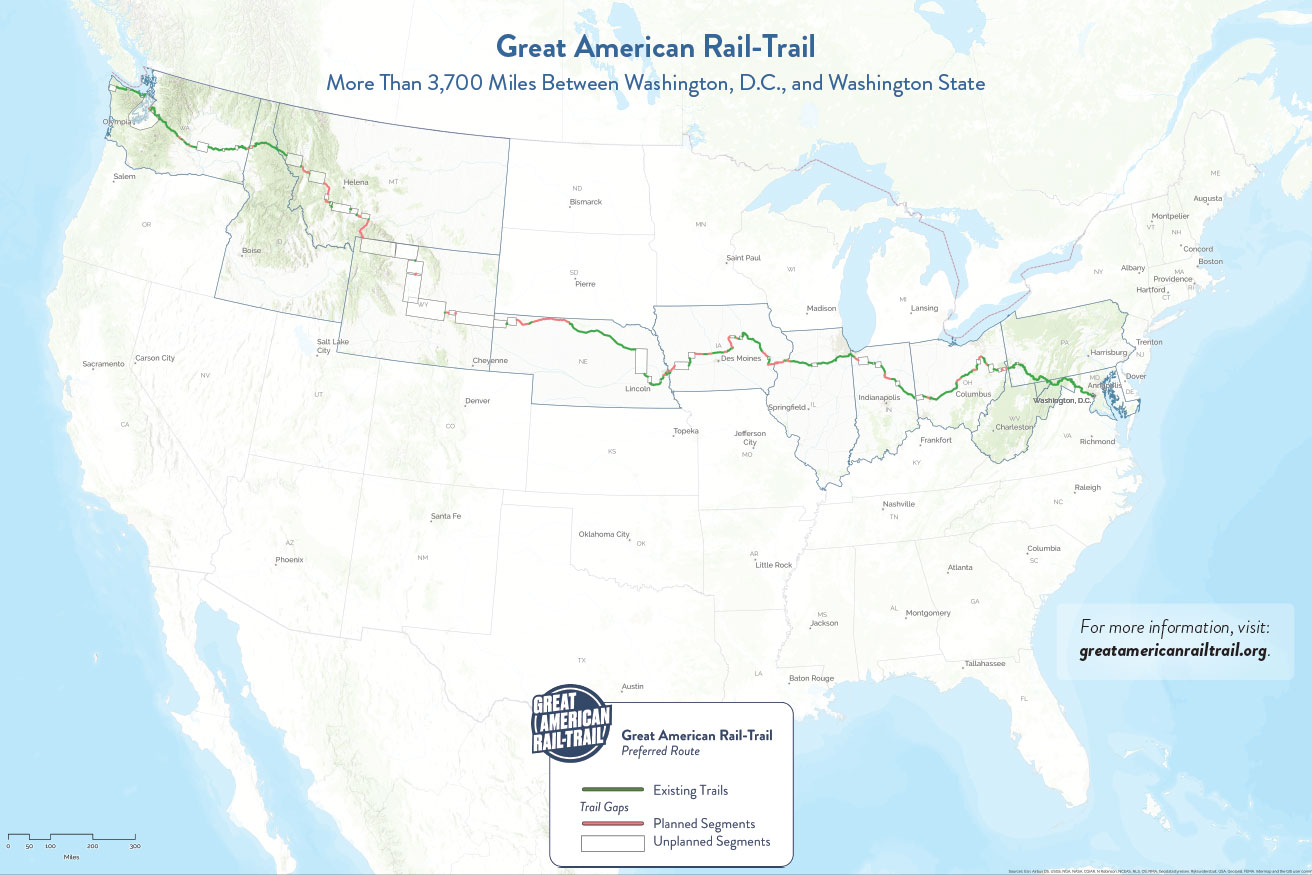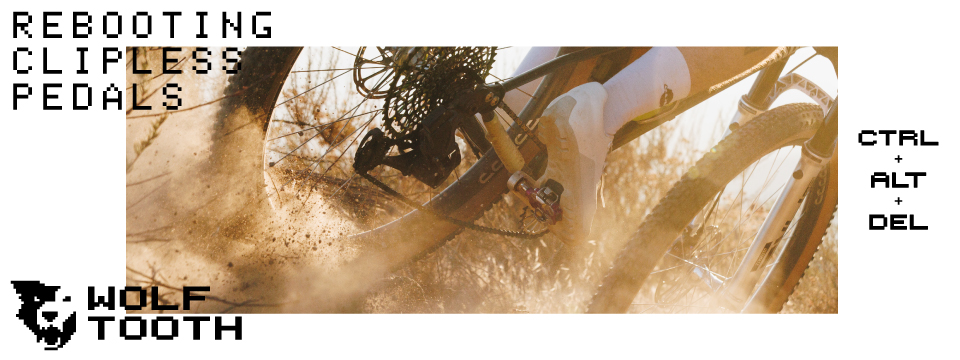The Rails-to-Trails Conservancy has unveiled the 3,700-mile Great American Rail-Trail route, a multi-use trail that will span the United States from coast to coast. Here’s the interactive map, two new videos, and state-by-state completion statistics…
The Rail-to-Trails Conservancy (RTC) develops rail and multi-use trails across the United States, and is responsible for over 31,000 miles of trail, plus another 8,000 miles waiting to be built. For over 30 years, the Conservancy has been a key player in all facets of trail development, including community growth, legal work, mapping, and of course, trail building. Back in February, the RTC announced an important step forward in the development of The Great American Rail-Trail, which will span across the United States from Washington, D.C., to Washington State.
Just a couple weeks ago, the RTC unveiled the route, completion statistics, and many more details. The route (see interactive map above) will traverse 12 states and the District of Columbia over 3,700 miles (5,954 km). Trail criteria were developed to ensure the Great American Rail-Trail would provide safe, nonmotorized travel on a route that is entirely bikeable. The same criteria specify that the Great America Rail-Trail be one contiguous route that is reasonably direct between Washington, D.C., and Washington State. It will be separated from vehicular traffic—a minimum of 80% initially and entirely separated when the trail is complete. The GART will join existing trails when possible and will serve as a catalyst for local economic development, including services for long-distance bike travelers.
Although The Great American Rail-Trail definitely won’t be packed full of technical singletrack riding, the tentative route crosses paths with several of our published routes, including the Cross Washington Mountain Bike Route, Great Divide Mountain Bike Route, the High Plains Byway, and the less documented areas in the central United States. Linking together the preexisting trails that are listed below, and gaining the support of the various states involved, was a massive step in the right direction for the Rails-to-Trails Conservancy, and we look forward to seeing how the route develops. This looks like it will be a great opportunity for entry-level overnighters and cross-country bikepacking journeys alike.
“The Great American Rail-Trail will be a national treasure. It presents a once-in-a-lifetime opportunity to create—together—an enduring gift to the nation that will bring joy for generations to come.” —Ryan Chao, RTC President
The preferred route, as RTC has dubbed it, will traverse the following 12 states and link many preexisting trails that range from just a couple miles long all the way to 270 miles. Check out the completion statistics and some of the highlight existing trails below:
Washington, D.C., and Maryland
207-miles / 100% complete
The easternmost endpoint for the Great American Rail-Trail begins in Washington, D.C., at the steps of the U.S. Capitol. Highlights include:
- National Mall Trails
- Capital Crescent Trail: This 11-mile trail—and the Great American Rail-Trail—begins in Georgetown, near the historic landmarks of the nation’s capital.
- Chesapeake & Ohio Canal National Historical Park: The nearly 185-mile trail connects Washington, D.C., to Cumberland, Maryland, featuring canal locks, lock houses, aqueducts, and their canal structures.
- The Great Allegheny Passage (GAP): is an iconic rail-trail that runs 150 miles from Cumberland, Maryland, to Pittsburgh, Pennsylvania.
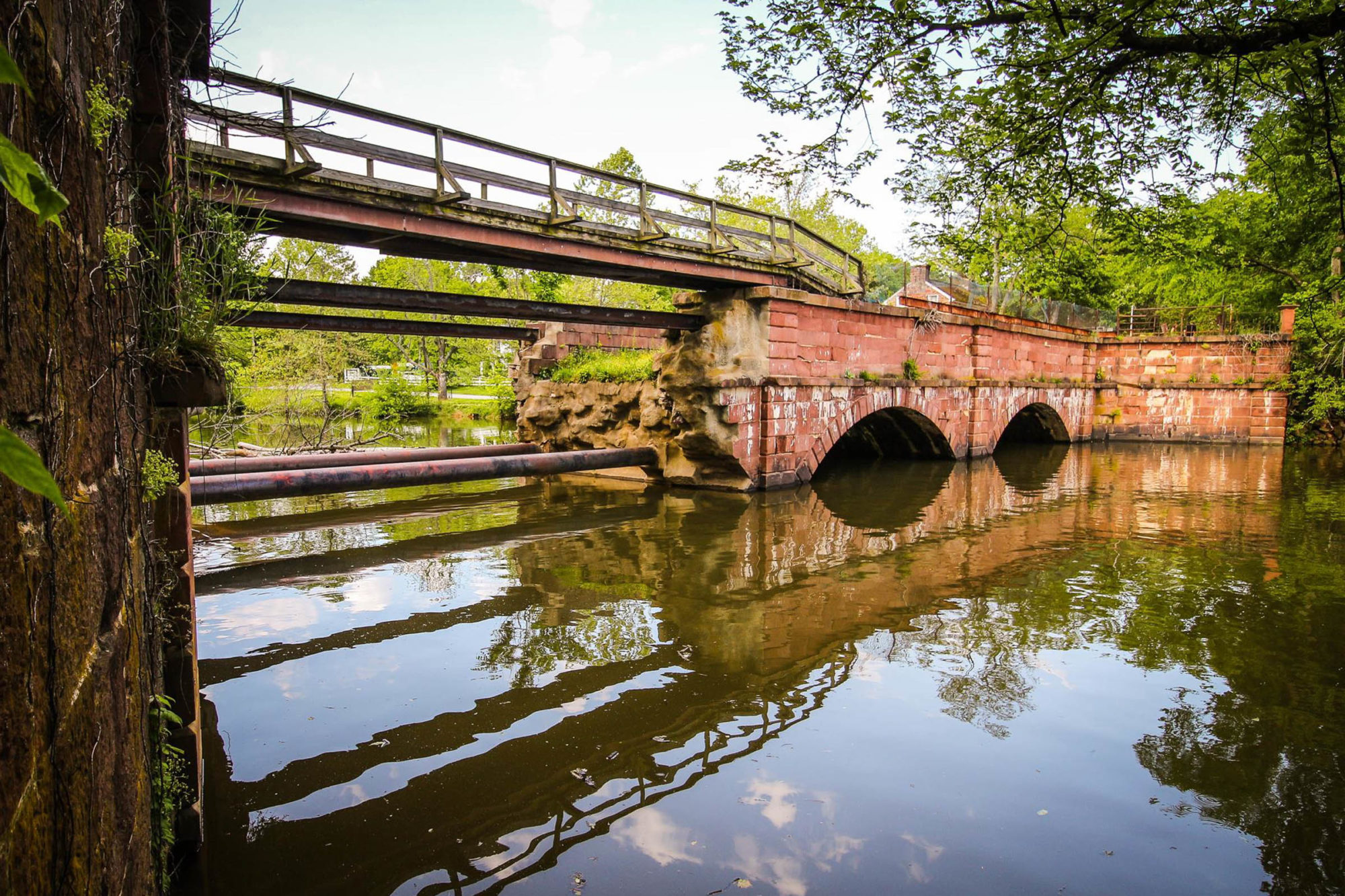
Pennsylvania
172-miles / 94% complete
Beginning at the Maryland–Pennsylvania border on the 150-mile Great Allegheny Passage, the route travels to Pittsburgh and through downtown on the Three Rivers Heritage Trail.
- Three Rivers Heritage Trail: The 21-mile Three Rivers Heritage Trail evolved from five separate trails and today comprises several unique sections. Most of these segments are riverfront trails along both banks of the three rivers that form Pittsburgh’s famous point: the Allegheny, Monongahela and Ohio.
- Montour Trail: The 46-mile Montour Trail follows a portion of the old Montour Railroad, which was built between 1877 and 1914 to link the Pittsburgh and Lake Erie Railroad with the region’s many coal mines. Forming a semi-circle around Pittsburgh, the Montour Railroad also connected other railroads, including the Pennsylvania, the Pittsburgh & West Virginia, the Baltimore & Ohio, and the Union. The trail, which now follows this route, is primarily crushed limestone.
West Virginia
8.7-miles / 53% complete
RTC defines the preferred route of the Great American Rail-Trail through West Virginia as 8.7 miles and 53% complete. The only existing trail that will host the Great American in West Virginia is the Panhandle Trail.
- Panhandle Trail: The 29-mile trail heads west from the Pittsburgh suburbs into northern West Virginia, serving as a literal gateway between the states.
Ohio
334-miles / 67% complete
The Great American will be hosted by more than two dozen existing trails through Ohio, including:
- Ohio to Erie Trail, Ohio: The 270-mile trail cuts diagonally across the state, connecting two major waterways, the Ohio River in Cincinnati and Lake Erie in Cleveland.
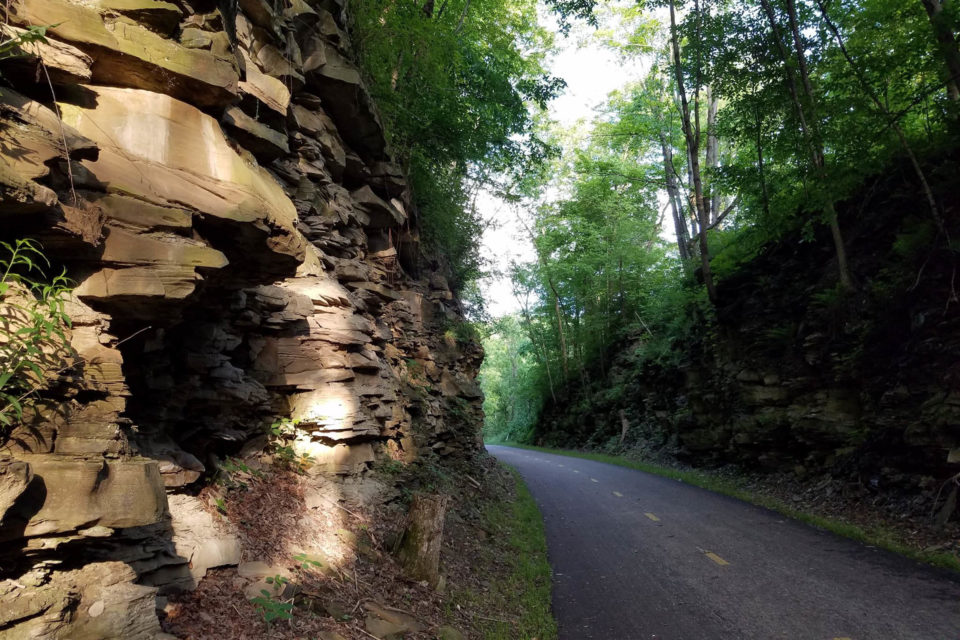
Indiana
225-miles / 50% complete
The Great American Rail-Trail will be hosted by a dozen existing trails through the state, including:
- Cardinal Greenway: RTC’s 2018 Rail-Trail Hall of Fame inductee stretches northwest for 61-miles through rural Indiana, making it the longest rail-trail in the state.
- The Nickel Plate Trail: The 46 mile Nickel Plate Trail traverses rural Indiana from Rochester south to the outskirts of Kokomo, with a short gap in the middle in Peru. The rail-trail runs along the former corridor of the Peru and Indianapolis Railroad chartered in 1846.
Illinois
195-miles / 86% complete
The Great American will be hosted by eight existing trails through Illinois, including:
- Hennepin Canal Parkway: The 100-mile-plus trail parallels the early-20th-century canal and runs west from the Illinois River to the Rock River.
- The Great River Trail: The Great River Trail spans over 60 miles of Illinois terrain alongside the Mississippi River, taking trail users past various historical sites, including two Native American landmarks, on its way from Savanna to Rock Island.
Iowa
195-miles / 86% complete
The Great American will be hosted by 38 existing trails through the state, including:
- Cedar Valley Nature Trail, Iowa: This 52-mile pathway, one of the first rail-trail conversions in the state, follows the Cedar River and connects Waterloo, Cedar Falls, and Cedar Rapids.
- The High Trestle Trail: The High Trestle Trail is one of the most pristine and highly trafficked trails in Iowa—even at night. The trail’s popularity is largely due to its famous 130-foot-tall High Trestle Bridge, which boasts one of the most well-known rail-trail art installations in the country, From Here to There.
Nebraska
594-miles / 51% complete
The Great American Rail-Trail crosses from Iowa into Nebraska on the iconic Bob Kerrey Pedestrian Bridge—a 3,000-foot cable-suspension structure over the Missouri River. The GART will be hosted by 22 existing trails through the state, including:
- Cowboy Recreation and Nature Trail: One of the longest rail-trails in the country, this 219-mile trail traverses rural Nebraska, connecting small towns and offering views of the High Plains.
Wyoming
508-miles / 8% complete
While only 8.1 miles of the route are complete, the state’s recent report on active transportation—including trails—recommended a minimum investment of $10 million annually. Highlights, so far, include:
- Casper Rail Trail: This six-mile trail is an important connector in one of the largest cities in Wyoming.
Montana
427-miles / 20% complete
The preferred route of the Great American Rail-Trail through Montana will connect communities already well-known for their outdoor recreation assets—including Livingston, Bozeman, Three Forks, Butte and Missoula.
- Headwaters Trail System: The nearly 12-mile trail connects to Missouri Headwaters State Park, where three rivers meet to form the Missouri River: the Jefferson, Madison and Gallatin.
Idaho
90-miles / 88% complete
Idaho is nearly complete with the Great American Rail-Trail crossing the state and the majority of the preferred route already existing. Highlights include:
- Trail of the Coeur d’Alenes, Idaho: This nearly 72-mile trail runs through Idaho’s panhandle, delivering breathtaking vistas through the state’s forests.
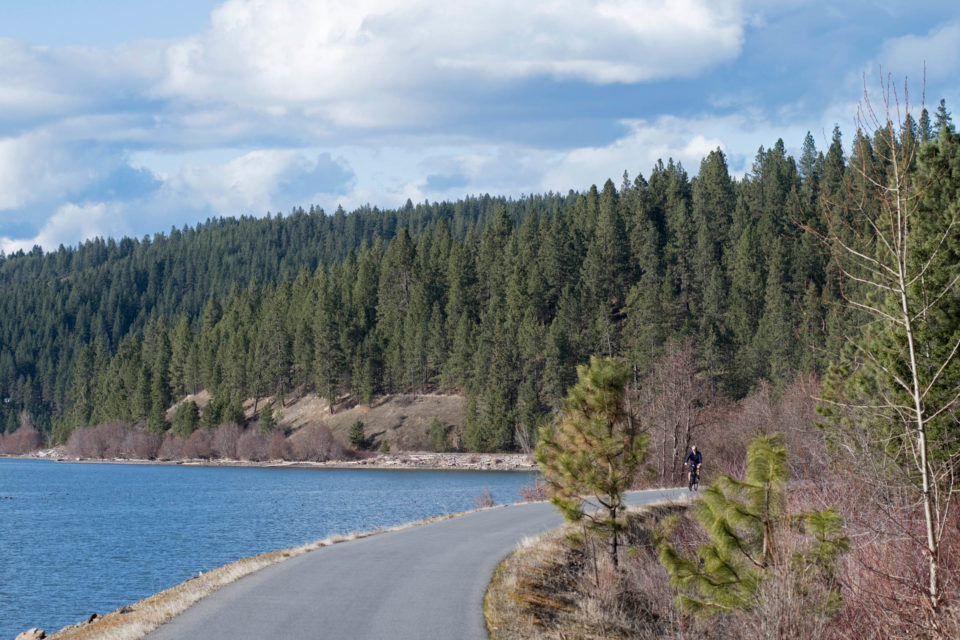
Washington
518-miles / 71% complete
RTC defines the preferred route of the Great American Rail-Trail through Washington as 517.5 miles and 71% complete. This includes:
- Palouse to Cascades State Park Trail: Another of the nation’s longest rail-trail conversions, this trail spans more than 200 miles across Washington and marks the terminus of the Great American Rail-Trail.
- Olympic Discovery Trail: Check out our bikepacking route that uses this trail.
For more details, check out GreatAmericanRailTrail.org .
All photos courtesy of Rails-to-Trails Conservancy. Feature photo: NE The Cowboy Trail crosses the Elkhorn River just west of Norfolk. Photo by Scott Bohaty
FILED IN (CATEGORIES & TAGS)
Dispatch
Please keep the conversation civil, constructive, and inclusive, or your comment will be removed.







